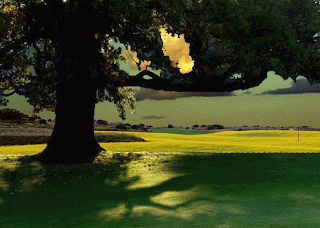The question of whether owls maintain lifelong residency within a single tree is a common query, deeply entrenched in popular imagination. The reality, however, is more nuanced than a simple yes or no. This exploration delves into the intricacies of owl territoriality, nesting behavior, and dispersal patterns, debunking the myth of perpetual arboreal allegiance.
I. Unveiling the Myth: The Romantic Ideal vs. Ecological Reality
The romantic vision of an owl, a sentinel of the woods, perched steadfastly in the same tree for decades, evokes a sense of stability and timelessness. This imagery is powerful. However, it clashes with the dynamic realities of ecological processes. Owl behavior is intrinsically linked to resource availability, breeding success, and the ever-present pressures of competition and predation. Owls, while often exhibiting site fidelity, are not inextricably bound to a singular arboreal location.
II. Site Fidelity: A Preference, Not a Prison
Site fidelity, the tendency of an animal to return to a previously occupied location, is a well-documented phenomenon in many owl species. This proclivity is particularly pronounced during the breeding season. A female owl may consistently utilize the same nest cavity or platform year after year, provided it remains structurally sound and secure from predators. This preference is not born from sentimentality, but rather from pragmatic considerations: familiarity with the local terrain, established hunting routes, and a proven track record of reproductive success in that specific locale. For instance, a barn owl might return to the same barn rafters for multiple breeding seasons, attracted by the consistent availability of rodent prey in the surrounding fields.
Consider the Great Horned Owl, a formidable predator. They often reuse nests built by other birds, such as hawks or crows, or even natural cavities in mature trees. The choice of nest site is determined by factors like accessibility, protection from the elements, and proximity to hunting grounds. If these conditions remain favorable, the owl will likely exhibit site fidelity, returning to the same nest location in subsequent years.
III. Dispersal: The Imperative of Youthful Exploration
While adult owls might demonstrate a strong preference for established territories, juvenile owls embark on a period of dispersal, venturing away from their natal territories to establish their own. This dispersal phase is crucial for preventing inbreeding, reducing competition for resources within the parental territory, and colonizing new habitats. The distance a young owl disperses can vary significantly depending on the species, population density, and the availability of suitable habitat. Some might only move a few kilometers, while others undertake journeys spanning hundreds of kilometers.
This nomadic phase is fraught with peril. Young owls face challenges such as unfamiliar landscapes, heightened risk of predation, and the difficulty of securing a territory already occupied by established adults. The success of dispersal hinges on the owl’s ability to navigate, locate suitable hunting grounds, and outcompete rivals for coveted nesting sites. Think of it as an avian odyssey, a quest for a future home, far removed from the familiar boughs of their upbringing.
IV. Habitat Dynamics: The Ever-Changing Landscape
The stability of an owl’s chosen habitat is far from guaranteed. Forest fires, logging operations, urban development, and natural disasters can all dramatically alter the landscape, rendering previously suitable habitats uninhabitable. An owl’s reliance on a specific tree can be shattered by the fall of that very tree due to disease or storm damage. When faced with such environmental disruptions, owls are forced to adapt, relocate, and seek out new territories that can support their needs.
The availability of prey also plays a critical role. Fluctuations in rodent populations, for example, can significantly impact an owl’s ability to thrive in a particular location. If prey becomes scarce, the owl may be compelled to abandon its territory in search of more productive hunting grounds. The decision to stay or leave is a delicate calculus, weighing the costs of relocation against the benefits of remaining in a familiar but impoverished environment. Imagine a seasoned hunter, forced to abandon their favorite hunting grounds due to a sudden decline in the game population – a similar predicament faces the owl.
V. Competition and Predation: The Constant Struggle
The avian world is a competitive arena, rife with territorial disputes and the ever-present threat of predation. Owls face competition from other owl species, as well as from hawks, eagles, and other raptors, for nesting sites and hunting territories. A larger, more dominant owl species might displace a smaller owl from its preferred territory, forcing it to seek refuge elsewhere. Similarly, the presence of predators, such as foxes, coyotes, or even larger owls, can make a particular location too risky to inhabit.
The interplay between competition and predation is a constant pressure, shaping the distribution and behavior of owl populations. An owl that consistently occupies the same tree risks becoming an easy target for predators or a victim of more aggressive competitors. The ability to adapt, relocate, and defend one’s territory is essential for survival in this unforgiving environment. Consider the delicate dance between predator and prey, a constant negotiation that shapes the very landscape of survival. For the owl, this dance often dictates whether it remains in its familiar haunt or seeks safer ground.
VI. Conclusion: A Synthesis of Stability and Adaptability
The notion of an owl permanently residing in a single tree is a romantic oversimplification. While owls exhibit site fidelity and often return to familiar nesting sites, their behavior is ultimately governed by the dynamic interplay of ecological factors. Dispersal, habitat dynamics, competition, and predation all contribute to the owl’s capacity for adaptation and relocation. Owls are not static fixtures of the forest. They are adaptable creatures, capable of navigating the complexities of their environment and securing their place within the ever-changing tapestry of the natural world. The reality is far more fascinating than the myth: owls are masters of adaptation, their lives a testament to the resilience and resourcefulness of nature.
